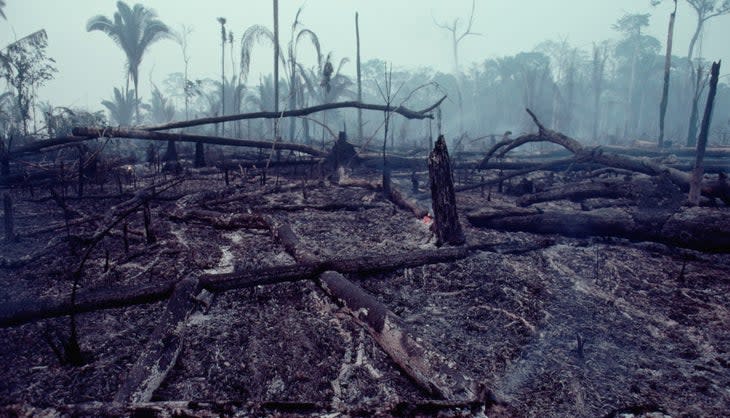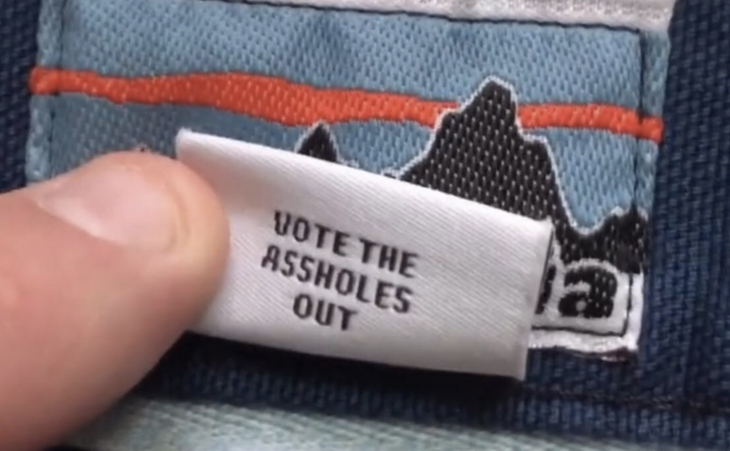Patagonia Will Donate $100 Million a Year to Fight Climate Change. What Can that Money Accomplish?
This article originally appeared on Outside
On September 14, one of the most influential business owners in the outdoor space made a decision that stunned the world. Yvon Chouinard, founder of the apparel brand Patagonia, announced that he had voluntarily given away his $3 billion company, placing ownership in a trust and vowing to spend all future profits on environmental causes. A Patagonia spokesperson said the move will generate about $100 million each year for the fight against climate change.
The decision wrote its own headlines. Outlets from the New York Times to Forbes to this website published stories highlighting the unorthodox move and its potential to do good for the planet. Everyone from economists to climbers weighed in.
A month after the restructuring, though, questions linger. One of the most pressing queries is what, exactly, $100 million a year can accomplish in the world of environmental philanthropy.
The short answer: a lot, depending on where the money goes.
"With $100 million, in some places like Namibia, or Australia, you can get huge protection done," said David Banks, chief conservation officer at The Nature Conservancy. "One hundred million dollars doesn’t go very far in New Hampshire or Rhode Island."
As Patagonia begins making philanthropic decisions under its new corporate model, we spoke to experts about what the money can do for the environment, and how this compares to other paths taken by companies and billionaires who want to do good.
What Can $100 Million a Year Actually Do?
To predict Patagonia's philanthropic potential, it's important first to understand the company's new structure. When Chouinard and his family changed Patagonia's ownership model, they wanted to ensure the business maintained its current growth trajectory but started sending all profits to the environment. To accomplish those dual goals, they created a trust called Patagonia Purpose and donated 100 percent of the company's voting stock to it, to oversee the brand's strategic direction. The non-voting stock--about 98 percent of private Patagonia shares--were donated to a new 501(c)(4) nonprofit called the Holdfast Collective.
The Chouinards will sit on the company's board and guide the trust, but from now on, all of Patagonia's profits not reinvested in the business will go directly to the Holdfast Collective, and from there, to environmental causes and political action.
One hundred million dollars sounds like a lot of money--but when it comes to fighting a global crisis like climate change, it might not go as far as most people think. Many organizations already spend annual sums on climate work that dwarf Patagonia's promised dollars.
The Nature Conservancy, for instance--the world's largest nonprofit dedicated to conserving land and biodiversity--spent more than $156 million in 2020 on land and easement purchases around the globe, and almost $700 million on its total efforts, according to the organization's financial reporting.
Said Banks, any group focused on natural solutions to climate change needs to look at high-value areas like the Amazon and Congo basins, which are under severe threat from industrial logging and deforestation for agriculture, and will be extremely expensive to protect in perpetuity. Banks estimates it will cost about $500 billion a year to create a fully natural climate solution that keeps global warming below 2 degrees Celsius compared to pre-industrial times, the goal set by the Paris Agreement and other experts.
"When you think about $100 million relative to that, it's not a lot," he said. "But if you can use that $100 million not only to influence policy, but to demonstrate some real wins...then others can start to get on board."

One high-value way to do that, in Banks's view, is to support state and local bond initiatives that fund land protection. "You can put $1 million dollars into a local bond initiative that [might] generate $20, $30, $100 million a year of funding for land protection," he said.
The Nature Conservancy calculates that in the past decade it has generated about 2,000 conservation dollars for every $1 it has spent to support ballot measures. In 2019, the group spent $18,000 campaigning for a bond initiative in King County, Washington, that ultimately generated $810 million for open spaces, parks, and trails.
And Patagonia could rely on the Holdfast Collective to dive even deeper into politics than that, if it wants. A traditional nonprofit filed with the IRS as a 501(c)(3) has significant restrictions on political donations, but a 501(c)(4)--the legal designation of the Holdfast Collective--doesn't.
The Holdfast Collective's new executive director, Greg Curtis, declined comment on the nonprofit's future political funding. But if an organization cares about fighting climate change, some of that certainly depends on lobbying in Washington and supporting ballot measures, said David Callahan, founder and editor of Inside Philanthropy, a publication dedicated to tracking the world of charitable giving. And Patagonia hasn't been shy about its political activism in the past. It once sold shorts with tags that read "Vote the Assholes Out."

Wherever the Holdfast Collective's money goes, it will no doubt occupy an important place in the world of 501(c)(4)s fighting for environmental change. Fewer 501(c)(4)s exist than traditional nonprofits in the climate space, and most are orders of magnitude smaller than the Holdfast Collective. The Citizens' Climate Lobby, for instance, had a budget of just over $2.3 million in 2022.
Perhaps unsurprisingly, the competition on the other side of the climate fight is fierce and well funded.
The oil and gas industry spent more than $81.9 million on lobbying in the first three quarters of 2021, according to watchdog website Opensecrets.org. In the first quarter of 2022, the country's top oil and gas companies spent $12.4 million on lobbying.
"During the first three months of 2022, [those] companies spent millions lobbying congress on a range of issues and bills, including Biden's stalled Build Back Better legislation, carbon capture and sequestration, and federal oil and gas leases, according to filings," opensecrets.org reported.
"We're seeing a kind of arms race between mega donors on the left and right," Callahan said.
All of which has some experts asking: Could other routes have stretched Patagonia’s dollars further?
It's a difficult question to answer. The decision to pursue this new corporate structure was, admittedly, "very unusual," according to Callahan. "There are a lot of examples of billionaires who have given away most of their wealth, and not a lot of examples of companies that have been put into this kind of nonprofit," he said.
Perhaps the only comparable example in recent memory is Republican donor and billionaire Barre Seid's decision to give away his electronics company, worth $1.6 billion, to a conservative nonprofit dedicated to, among other things, fighting climate change legislation.
By contrast, there are plenty of recent examples of billionaires treading the more conventional path of corporate activism: the Bezos Earth Fund, named for the Amazon founder, has committed $10 billion in grant money over 10 years to fight climate change, and announced in 2021 it had awarded $443 million in grants to organizations focused on climate and conservation. REI, Jumping into the 501(c)(3) space, recently started a public charity called REI Cooperative Action Fund, which has given away $1.4 million to 19 nonprofits working to build a more equitable and inclusive outdoor culture. And Patagonia's fellow outdoor brand Cotopaxi operates under what it calls a "gear for good" model, wherein it gives a certain percentage of annual revenue to the Cotopaxi Foundation, which then distributes it to charitable causes. Since 2013, the foundation has distributed more than $3 million to programs working to promote education and lift people out of poverty.
The Chouinards could also simply have sold the company, similar to what Doug Tompkins--founder of The North Face and Esprit--did. Tompkins then used the profits for environmental causes. But Chouinard wrote in a public letter that he dismissed this idea because he wants to ensure the company maintains its core values into the future. A sale, he wrote, wouldn't offer that guarantee.
Capitalism for Good
Patagonia has, for years, struggled with its role as a multibillion-dollar global enterprise in a world plagued by climate change, overconsumption, and pollution.
"We haven't figured out how to make a jacket in a way that gives back to the planet," said Corley Kenna, Patagonia's head of communications and policy. "It’s one of the reasons why we are invested in the food business now, because you can absolutely grow food in a way that gives back to the planet."
It's that willingness to publicly discuss tensions over capitalism and the environment that will give Patagonia credibility in the philanthropy space, according to Banks. (Compare that to a company like Walmart, which faced criticism when it ran an anti-hunger campaign while paying employees barely more than minimum wage.) Patagonia can dive aggressively into climate work with a name that carries weight, said Banks.
"They can be the real leaders showing how it can be done."
For exclusive access to all of our fitness, gear, adventure, and travel stories, plus discounts on trips, events, and gear, sign up for Outside+ today.

